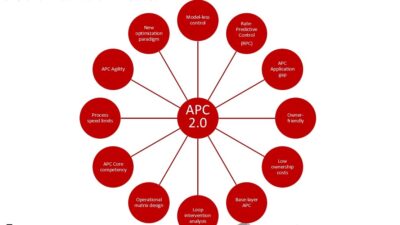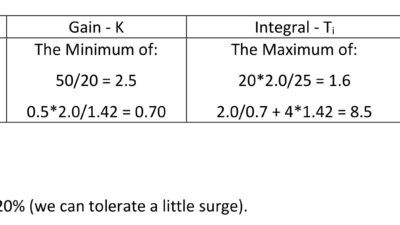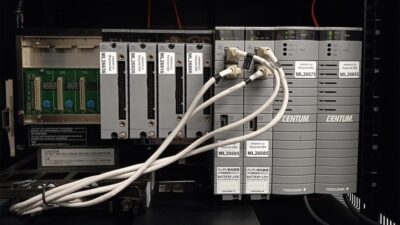Pressure regulators are very simple control devices, taking necessary operating energy from the process. In contrast, control valves require transmitters, controllers, and external energy sources.Value engineering strives to implement simple solutions that meet requirements. The simplicity of pressure regulators is reason enough to consider them.
KEY WORDS
Process control & instrumentation
Regulators and valves
Control
Pressure regulators are very simple control devices, taking necessary operating energy from the process. In contrast, control valves require transmitters, controllers, and external energy sources.
Value engineering strives to implement simple solutions that meet requirements. The simplicity of pressure regulators is reason enough to consider them. Beside this, regulators typically cost less to purchase, install, and maintain, are more compact, and weigh less than control valves.
Comparing features, 2 choices
When compared side-by-side, control valves win the “features” contest (See Comparison Table). But in applications where all these advantages are not required, and where proportional control will meet the requirements, regulators may be the correct choice.
Regulators come in two basic designs: self-operated and pilot-operated.
Self-operated regulators can be provided with either spring or pressure loading and are suited for applications requiring the outlet pressure be maintained within 10% of the setting. Typical self-operated regulator applications include industrial, commercial, and domestic gas service; instrument air or gas supply; fuel gas to industrial furnaces; steam headers; and water pressure control.
Basic self-operated regulators use a spring-loaded diaphragm. In the Basic Self-operated Regulator example shown, downstream pressure applied to the bottom of the diaphragm works to overcome downward force applied by the spring. The regulator’s plug maintains position when forces on the top and bottom of the diaphragm are equal. Changes in the downstream load in-crease or decrease forces on the bottom of the diaphragm, moving the regulator plug to a new position.
Spring-loaded, self-operated regulators provide the simplest design, construction, and operation, but because of spring effects, rangeability is sacrificed for stability. Pressure-loaded regulators use the same principles as spring-loaded regulators, but mechanical forces applied by the spring are replaced with air pressure (See Pressure-loaded Regulator diagram).
Pressure-loaded regulators demonstrate good stability, provide accurate outlet pressure control, and use all available travel for greater rangeability. However, it’s not all good news. Pressure-loaded regulators also require loading pressures to be vented to atmosphere or bled into the downstream system.
The simple design of self-operated regulators limit them to simple proportional band output.
A characteristic of devices using only proportional band control is “offset.”
Offset is demonstrated in process control experiments by placing the setpoint of a proportional-only controller at 50% of its range and observing the measured variable, which also reaches the 50% mark indicating “on-setpoint” control. (Operators like controllers where the setpoint and the measured variable match up.) When the setpoint of the proportional-only controller is moved away from the 50% setpoint, for example to 75%, the measured variable will follow the setpoint upward. The process will remain in control, but the match up between setpoint and measured variable will never be achieved. The difference is offset.
In regulators offset is frequently referred to as “droop” and is described as a reduction of outlet pressure experienced as flow rates increase. Usually stated as a percent, inches of water column, or pounds per square inch, droop shows the difference between the outlet pressure at published maximum flow rate and the outlet pressure setting made at low flow rates.
Comparison Table
Control valves
Regulators
Choice of hard parts:
Good
Poor
Choice of soft parts:
Good
Good
Choice of end connections:
Good
Poor
Rangeability:
Good
Poor
Responsiveness:
Fair
Good
Temperature range:
Good
Poor
Tight shut-off:
Fair
Good
Availability of accessories:
Good
Poor
Ease of installation:
Fair
Good
Ease of maintenance:
Fair
Good
Effectiveness of resizing through trim changes:
Good
Poor
Ease of remote setting:
Good
Poor
Cost:
Fair
Good
Pilot-operated regulators
Pilot-operated regulators fit applications requiring outlet pressure to be maintained within 2-5% of setting, such as gas or water district regulating stations; gas turbine fuel supply; gas-fired heat-treating furnaces and boilers; and commercial and industrial gas supplies.
Pilot-operated regulators come in two types: two-path loading, and unloading systems.
Both types suit installations requiring accurate pressure control at a point downstream from the regulator. However, when the downstream sensing point exceeds eight to ten pipe diameters past the regulator, an adjustable restriction in the sensing line may be necessary to allow the regulator to be “tuned” for stability.
Regulators using two-path designs provide rapid response, accuracy, and stability (See Two-path Regulator Systems). Changes in downstream pressure act on two parts of the regulator at the same time. The main diaphragm provides a quick response, but lacks the accuracy necessary to return to the desired pressure setting. The slower responding pilot regulator provides the high gain needed to accurately return the system to its setting and allows full travel of the main regulator.
Unloading regulator systems use a pilot regulator to unload main regulator pressure (See Pilot Operated Regulator Unloading System). While fairly accurate, they are less stable than two-path regulator systems.
Sizing and specifying
Regulator sizing is similar to valve sizing, and requires knowing:
Media type (e.g., natural gas, argon, air, water, etc.);
Inlet and outlet pressures;
Minimum, maximum, and normal flow rates;
Media flowing temperature; and
Need for tight shut-off.
Some regulators provide a tight shut-off as a standard. Control valve users are often surprised to find that unless specified, control valves may not provide tight shut-off. To further confuse the matter, the definition of tight shut-off varies for control valves and regulators.
Control valve shut-off tightness is defined as leakage classes in ANSI 70-2-1991 standard. For example, a control valve plug and seat with a class II leakage designation allows maximum leakage of 0.5% of valve capacity at full travel when tested with air. Using the same conditions and media, but substituting a class IV leakage designation, maximum leakage allowance reduces to 0.01%.
Regulator shut-off tightness is less formal than for control valves, but some installations, such as residential natural gas regulators, require tight shut-off, or in regulator terms, “lock-up.”
Regulator manufacturers frequently combine levers to force the plug tightly onto the seat to obtain lock-up (See Self-operated Regulator with Lock-up Linkage).
Specifying control valves requires determining if the valve should fail-open, fail-closed, or fail-in-place. Generally, regulators have no predefined fail action and may fail open or closed. The Failure Event table provides examples of initiating failure events and corresponding responses.
Noise control in regulators
Noise considerations, common when specifying control valves, are often overlooked in specifying pressure-reducing regulators. Anticipating potential noise hazards, especially in steam regulators, can avoid unplanned shutdowns to “quiet” an otherwise good installation.
Noise generated in a regulator is a function of flow rate, pressure drop, and pressure-drop ratio (the pressure drop divided by the absolute inlet pressure).
Most regulator manufacturers provide information showing variations in noise levels at a standard distance (e.g., 48-in. downstream, and 30-in. from the pipe) with different pressure-drop ratios, inlet pressures, and flow rates.
Flow rates through regulators smaller than 2-in., and with inlet pressures of less than 300 psig are unlikely to produce hazardous noise levels, as defined by Occupational Safety and Health Administration standards. That’s not to say people won’t complain about noise; volume should be carefully considered.
Noise does not generally come directly from the regulator, but from downstream piping. Using heavier walled pipe and/or insulation downstream of the regulator reduces noise, but also causes the noise to radiate further down piping beyond the heavier pipe and/or the insulation.
Coping with regulator noise can be handled in several ways; the best solution may combine approaches.
Common approaches to reducing regulator noise follow.
Locating the regulator farther from occupied spaces is often not feasible, but should not be overlooked as a viable solution.
Changing the pipe design to reduce flow rate or pressure-drop ratio at the regulator may require using diffusers, or multiple regulators installed in series or parallel.
Using heavier schedule pipe will reduce noise levels, however changing a 4-in. steel pipe from Schedule 40 to Schedule 80 reduces the noise only about 5 dB. (For reference, reducing noise by 6 dB is approximately equal to reducing sound pressure by half.)
Using 1-in. of thermal insulation reduces noise about 3 to 6 dB, up to a maximum of about 12 to 15 dB. Acoustical insulation is more effective and can reduce noise by 8 to 12 dB for each inch of insulation up to a practical maximum of about 24 to 28 dB.
Silencers, using similar principles as an automobile muffler, can provide 24 to 28 dB of noise reduction when installed immediately downstream of the regulator.
Regulators come in a variety of designs, some designs produce more noise. Selecting a regulator with a “quieter” design may cost more to purchase, but less to own after considering installation and maintenance costs.
In a regulator installation requiring high-pressure drops, noise cannot be eliminated altogether. Deciding the best noise abatement solution requires examining the options and deciding which are the most economical and convenient.
Every type of pressure-reducing application requires a blend of price, capacity, accuracy, stability, simplicity, safety, and responsiveness. Regulators may not be the answer for every pressure reducing application, but they deserve consideration.
For more information, visit www.controleng.com/info
Failure Event Table Failure events
Regulator types
Main diaphragm ruptures
Main spring breaks
Downstream control line breaks
Pilot diaphragm ruptures
Basic self-operated regulator
Opens
Closes
Opens
NA
Self-operated pressure-loading regulators w/downstream bleed
Closes
Opens
Opens
Opens
Pilot-operated two-path regulator
Closes
Opens
Opens
Closes
Pilot-operated unloading regulator
Closes
Opens
Opens
Closes



